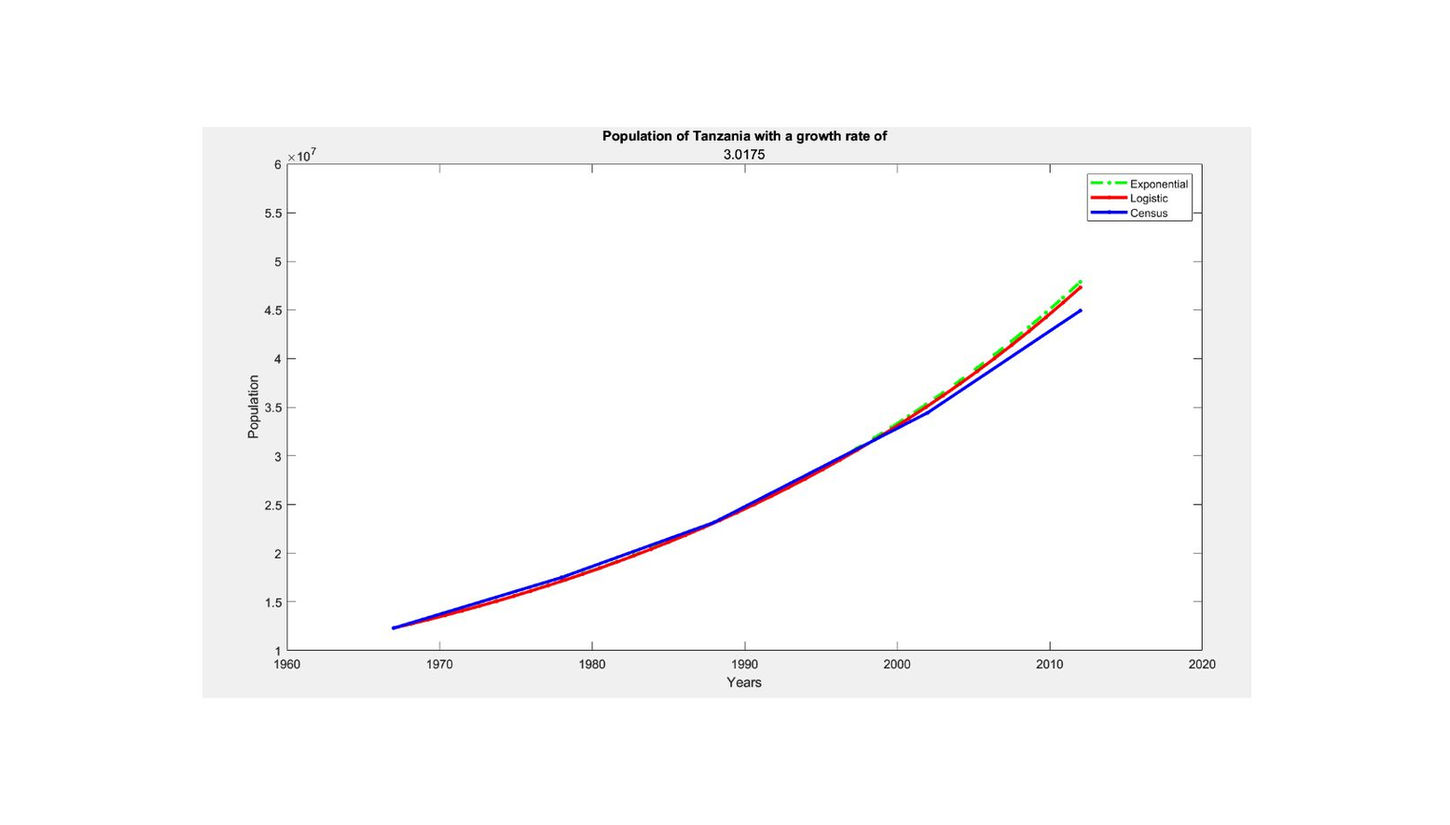
PARAMETER SENSITIVITY
ANALYSIS
In this section, we conducted a sensitivity analysis of the birth rate, relying on certain assumptions and insights from existing literature. Initially, we examined the population of women in Tanzania over several years to explore the potential impact of birth control on population growth. According to Statista (n.d), the use of contraceptives among women aged 15-49 was 31.4% in 2014 and increased to 34.2% in 2018.
Drawing on statistical data, we noted that Tanzania had a maximum population growth rate of 3.58% in recent years (Statista, 2023), establishing the upper limit for our analysis, with the average growth rate from the paper as the lower limit.
Our Assumptions
-
Our assumptions aimed to provide a comprehensive view of the situation. We assumed that all women using contraceptives were potentially capable of giving birth, with a worst-case scenario of them giving birth once every two years—a common pattern in many East African countries.
-
Simultaneously, we excluded females with low probabilities of giving birth, specifically those below 15 years and above 49 years, based on Statista's data. In this context, only women not using contraceptives were considered likely to give birth.
-
Another assumption in our analysis is that population growth depends on the number of children women give birth to, excluding men from this consideration. While simplifying the dynamics, this assumption invites discussion about the broader factors influencing population growth.
-
Additionally, we assumed negligible contraceptive usage before 2010, highlighting a significant shift in contraceptive practices over time. This assumption grounds our analysis in a period when the impact of birth control was likely less significant, providing context for the trajectory of our sensitivity analysis.The Sensitivity analysis was done considering the 2.88% to 3.58% population growth rate and now looking at how birth control would have affected the population growth rate if it were not negligible from 1967 to 2010.

Determining the rate of increase in contraceptive use per year as

It is interesting to note from the sensitivity analysis that even with a higher population growth rate of 3.58% and 3.2175%, the population growth is still within limits. Using contraceptives would cater to the natural increasing percentage of the population of Tanzania such that at any point the mean rate of population growth increases from 2.88% as used in the paper to 3.58%, there would be no much difference, ensuring that the population growth rate is curbed. In order to paint a clearer picture, we compare a natural population growth rate of 3.58% with another where birth control reduces it (but would have been 3.58% without contraceptives).
Parameter Sensitivity Analysis Figures
Comparison of Population Growth with and without the use of contraceptives
The two graphs below give us a clear projection and comparison of how the population growth would look like with and without the use of contraceptives for the same population growth rate of 3.58%, using the census data as reference. It can be seen that when the use of contraceptives was taken into consideration, even with a population growth rate of 3.58%, the logistic and exponential growth was almost similar to the population growth rate of the census data which was done at with a population growth rate of 2.88%. We see a sharp contrast for the projection of the same 3.58% population growth rate without the use of contraceptives. The graph shows that there is an alarming rise in the logistic and exponential population growth and can be seen far above the reference census population growth. Based on our analysis, it is clear that an increase in contraceptive use in Tanzania will not only manage the population appropriately but will drastically improve the student to teacher ratio and doctor to patient ratio which are currently not admirable.
Po


Population growth of Tanzania without the use of contraceptives
Population growth of Tanzania considering the use of contraceptives








